I had the privilege of being part of an hour-long Q&A session with Ishtar Touailat, one of Sweden's most powerful business women and named “The IT woman of the Year”. Ishtar, talked, discussed and reflected on what she called value-driven leadership and I was inspired, so inspired that I wrote down my own thoughts on the subject.
That Ishtar inspired me is because she confirms a lot of what I myself lecture about and instill in my lectures (although I need a little more than an hour, as I spice up the message with a lot of theory ...).
What exactly is value-driven leadership?
Value-driven leadership, one of many fine buzzwords in today's organisational development, puts people at the center and emphasises the importance of relationship building and co-operation. In other words, the focus is on the soft values and not the hard, more controllable factors. This is where most people with responsibility for a company and its finances zoom out. For how do you measure the impact of the soft values, what does it mean to focus on people, to build a good organisational culture (alternatively change existing ones) - how does it work?
More than one of all these lecturers who speak on the issue, including myself, highlights the fact that this is a survival issue for companies that want to survive in the future. Especially if the companies intend to attract the new generation (future talents ...) who, unlike us the older generation, will value future employers based on how to deal with the soft issues. If the company's handling of these issues is not in line with its own values, that generation will choose to drop out, quit, change employers -
loyalty lies in the values, not the company (Greta Thunberg).
Employeeship
Tengblad (2009), one of a few researchers who have defined the concept of “employeeship”, focusing on communication and the relationship between the employees (according to Tengblad, all employees are in an organisation). If communication and relationship building are handled correctly, employees' involvement in the company increases and with it, their well-being and commitment to the company's operations also increases. When that happens, employee productivity rises (and it can be measured), loyalty to employers rises, they become ambassadors for the business, which in turn attracts new talent, which contributes to the company's growth.
What does it take then to build an organisational culture where value-driven leadership and employeeship are at the center (http://www.dcconsulting.se/foretagskultur/)? First of all, an insight is required, from everyone in the organisation. It’s all about the importance of the work - it must permeate leadership, the relationships between colleagues, customer contacts, how even products and/or services are used, marketing, etc. and not just nice words on a piece of paper (which unfortunately is the most common when working with value-driven approach). It simply takes hard work, it is not something you "just" decide at a management meeting and then tell your employees, because then it is doomed to fail.
What needs to be defined are the company's WHY? Not what the company does, or how it does it or for whom it does it, but why it does it, the benefits of the company's existence and contribution to society.
So how is it done then?
Without to much of a surprise, communication, communication and once again, communication is key here (http://www.dcconsulting.se/ja-jag-vet-jag-begar-mycket-av-dig/) The starting point in this process is always based on what already exists - what works and what does not work (mapping necessary), what the organisation wants to achieve and what it does not want to be connected to.
After that, EVERYONE in the organisation gets involved, all the way from management-level, to the department level - a job that requires a lot of time.
Each department must work with the concepts, their meaning and the consequence of the department's and individuals' work. Then the department and the different individuals' ways of working are defined, and if any changes in current behaviour are required, to meet the values. Last but not least, then this must be lived, communicated, fed back to - if not, then the values will fall into oblivion and all the resources put into the work will be of no use!
However, be aware of the ever-present struggle for power! Keep track of who decides what in the organisation (not always linked to the formal structure), who can be negatively affected by the process, who has the least interest in a job like this to work, who has the last word in connection with the definition of working methods and the likes. If this knowledge is used correctly, many obstacles along the way can be minimised but remember, not fully eradicated.
Some final words
In Ishtar's spirit, I end this text with; If you want to be one of the companies that survive and maybe even thrive in the future market, then these issues are something you must take into account, include in your way of working and constantly work on.
Do know that I can help you navigate the unknown terrain of soft values and find the right way forward for a successful future!

